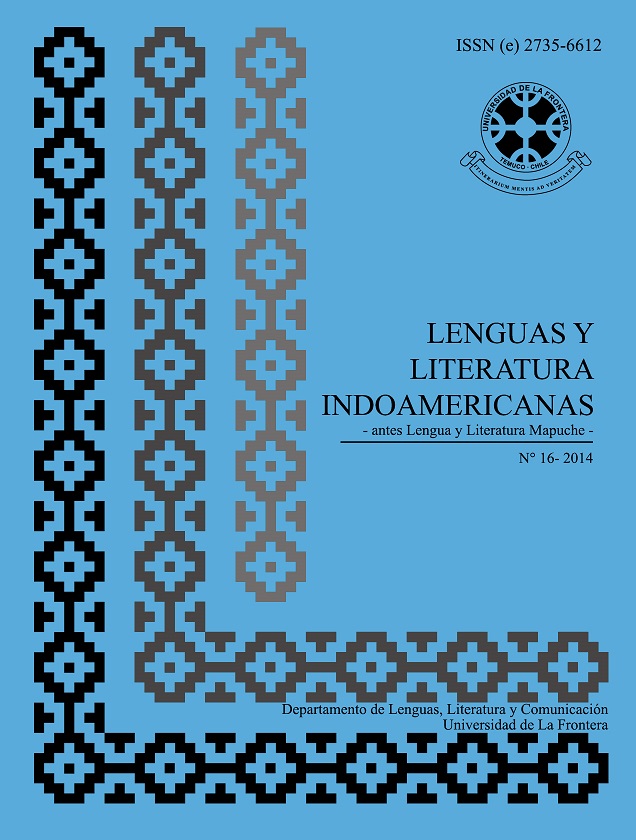Clasificación nominal en lenguas indígenas sudamericanas: fundamentos semánticos
Keywords:
lenguas indígenas, clasificación nominal, género, morfología, semánticaAbstract
Las lenguas presentan con gran frecuencia algún sistema gramatical para la categorización de los referentes de los sustantivos. Dichos mecanismos, sean del tipo de género, clases nominales o clasificadores –por mencionar los tipos más recurrentes en la comparación interlingüística–, generalmente se encuentran basados en determinados rasgos semánticos. Los diversos mecanismos de organización de los nominales exhiben criterios de asignación que suelen responder al significado del sustantivo o a ciertas propiedades -perceptibles o atribuidas– de su referente, en correspondencia con la observación de Corbett (1991) acerca de que todos los sistemas presentan un núcleo semántico. Este trabajo propone realizar un análisis que contrasta los sistemas de categorización nominal existentes en un conjunto de lenguas indígenas de América del Sur. El objetivo de la investigación es indagar acerca de los fundamentos semánticos que operan en las diversas lenguas, tanto en las que presentan sistemas más o menos tradicionales de género (que involucran las categorías de masculino/femenino/neutro) como en aquellas en las que se suma algún otro procedimiento para la organización de los sustantivos basado en rasgos semánticos distintos del sexo y la animacidad. En estos casos, se focalizarán especialmente los ejemplos en que existe alguna correlación semántica entre los diferentes criterios semánticos (sean de forma, tamaño, consistencia, etc.) y las categorías de ‘masculino’ y ‘femenino’.
Abstract
Languages frequently present a grammatical system for categorizing the referents of nouns. These mechanisms, whether the type of gender, class or nominal classifiers –to name the most persistent types in interlingual comparison–, are generally based on semantic features. The various mechanisms of noun organization exhibit assignment criteria which usually respond to the meaning of the noun or certain perceptible or attributed properties of its referent, in correspondence with Corbett’s observation (1991) that all systems that have a semantic nucleus. This paper proposes an analysis contrasting nominal categorization systems in a number of indigenous languages of South America. The objective of the research is to investigate the semantic foundations operating in the different languages, both those with traditional systems of gender (involving the categories of male / female / neutral) and those which add another procedure -based on semantic features different of sex
and animacy– for the organization of nouns. In these cases, the examples will focus especially where there is some semantic correlation between the various semantic criteria (whether in shape, size, consistency, etc.) and the categories of ‘male’ and ‘female’. Keywords: indigenous languages – noun classification – gender – morphology - semantics
Downloads
Published
How to Cite
Issue
Section
License

This work is licensed under a Creative Commons Attribution 4.0 International License.
Los autores/as conservan los derechos de autor y ceden a la revista el derecho de la primera publicación. La publicación se registra con la licencia de atribución/reconocimiento de Creative Commons, que permite a terceros utilizar lo publicado siempre que mencionen la autoría del trabajo y la primera publicación en esta revista.







